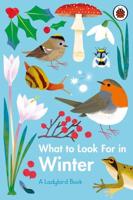Publisher's Synopsis
The Curly Hair Tarantula (Tliltocatl albopilosus), formerly known as Brachypelma albopilosum, is a terrestrial spider species native to Central America. The spider's name is derived from its distinguishing physical feature: its body and legs are coated in long, curled bristles that give it a fuzzy, unusual appearance. These bristles are a mix of brown, black, and golden tones, which adds to their remarkable appeal. As a result, their friendly temperament and lovely looks have made them one of the most popular pet tarantulas. Physical characteristics Curly Hair Tarantulas are medium-sized, with an average leg spread of 5 to 6 inches (12 to 15 cm) when completely developed. Their bodies are stocky, wide, and covered in curly hair. These hairs are more than simply a cosmetic aspect; they also serve functional objectives such as sensory detection and protection. Curly Hair Tarantulas, like many other tarantulas, can defend themselves by using their urticating hairs, which are tiny, barbed bristles on their abdomen. When threatened, they can flick these hairs at the attacker, inflicting irritation. However, because of their placid disposition, they do this much less frequently than more defensive animals. Their pigmentation is normally dark brown to black, with lighter, golden hairs that give them a "curly" appearance. This combination produces a soft, almost velvety appearance, which contributes to its popularity in the pet trade. Temperature and Behavior Curly Hair Tarantulas are known for their peaceful and docile demeanor. They move slowly, which makes them easier to observe and care for than faster or more defensive tarantulas. Although they are typically shy and prefer to hide in their burrows rather than interact with humans or potential hazards, they rarely show violent behavior. This makes them a popular choice among new tarantula keepers. While tarantulas are normally not suggested for regular handling, Curly Hair Tarantulas are one of the few species that certain keepers may occasionally approach with caution since they remain calm throughout engagement. However, each spider has an own personality, and some are more shy than others, so handling should always be done with caution. Diet and Feeding Curly Hair Tarantulas, like other tarantulas, are carnivorous and mostly eat insects. In captivity, they can eat crickets, mealworms, and cockroaches. Younger spiders, or spiderlings, may require smaller prey such as pinhead crickets or flightless fruit flies, whereas adults can feed on larger prey such as adult crickets or roaches. They are opportunistic feeders who use ambush tactics to capture prey. Despite their relatively inactive lifestyle, they are effective hunters when the occasion arises. Feeding routines differ according on the tarantula's age and size. Adults can typically go weeks between feedings, however younger tarantulas require more frequent meals to sustain their growth. Overfeeding should be avoided because fat can harm a tarantula's health. Lifespan Curly Hair Tarantulas are appealing since they have a longer lifespan than other typical pets. Females, in particular, can live up to 20 years in captivity if well cared for, although males normally have significantly lower lifespans, ranging from 5 to 10 years. Males often die shortly after attaining maturity and mating, although females might survive for many years.









